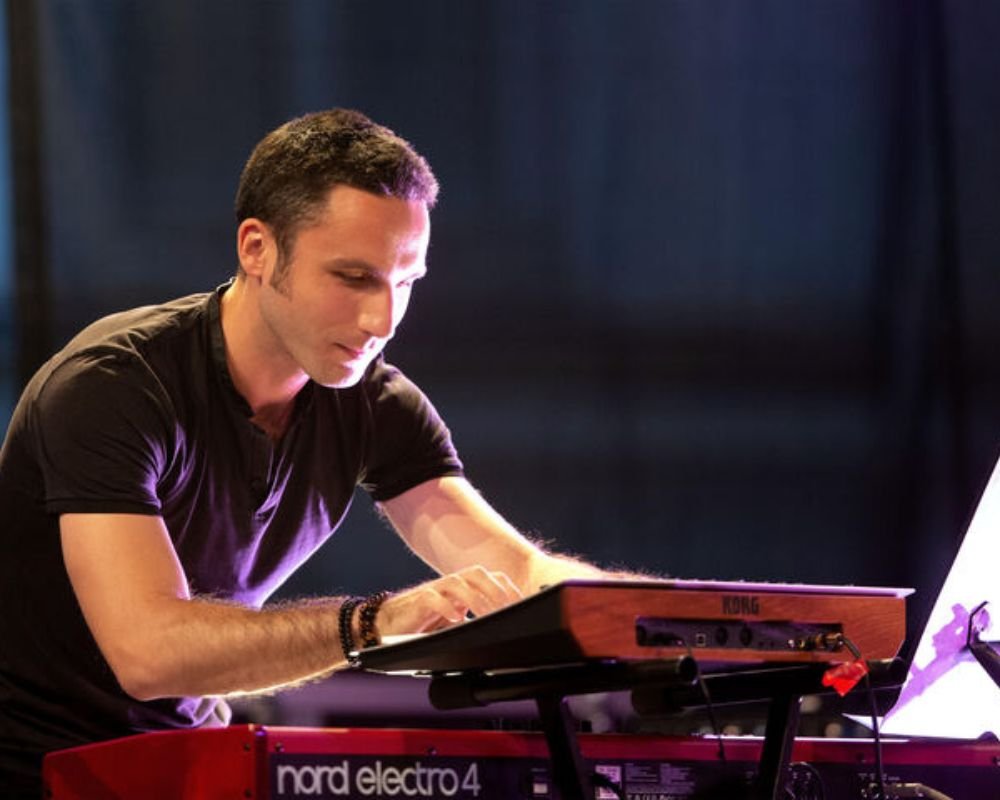Practice, stage: the art of transmitting and interpreting the scores of a musical composition according to Thomas Nguyen
Thomas Nguyen began playing the piano at the age of 5, and discovered the great masters of art music at the Conservatoire Régional de Reims. His repertoire includes operas, musical tales, musical comedies and chamber music, both vocal and instrumental. Alongside stage and concert music, Thomas Nguyen regularly composes for documentaries (ARTE, France TV). He continues to collaborate as pianist, arranger or musical director with numerous artists, representative of contemporary musical creation, and takes part in various tours in France and abroad.
The adventure of the score, from melody to composition
The birth of a score is a lengthy process. It can sometimes take several weeks, or even months, from the moment the idea is conceived, written and created, to the moment of the work's first public performance. The starting point is usually a medium: a text, a poem, a novel. This support gives rise to images, colors, sensations, then a structure. You need to see things inwardly before you start writing them down.
This mental structure gives rise to ideas for melodies, harmonies, rhythmic cells and so on. It's at this precise moment that we begin to put ideas down on paper and compose the score.
The instrument: an indispensable creative tool
The piano is an indispensable tool in my creative process, as it allows me to hear the music concretely, to feel it in the body. On a personal level, I also use it as a reduction instrument when writing for larger ensembles. Sometimes I sit down at my desk with no specific idea in mind, and let my musical imagination run wild. But this method is more akin to improvisation, and I rarely fix the ideas that emerge.
Composing a score requires demanding and precise technical know-how: harmony, orchestration, specific register and technique for the different instruments in the orchestra, etc.
Much of this know-how is acquired through the study of music. Meeting a performer is then fundamental to the process of creating new music.
Composition, a human adventure combining know-how and creativity
Each project is a new adventure, both musical and human, usually triggered by an encounter with a performer.
Let's take a very concrete example: as I write this article, I've just finished composing a score for harp and bass trombone, commissioned by Annabelle Jarre (harpist) and Cyril Bernhard (trombonist). Before we even started thinking about ideas, we spent some time together playing music, talking about the specificities of each instrument and reading scores.
1 Immersing yourself in the work
An initial immersion phase was essential, giving us a clearer idea of the technical possibilities of the bass trombone and harp, and the colors created by the blend of timbres. Then it was time to turn to literature to choose the medium.
I decided to work around the lunar triad and entitled this work, Les trois chants de la lune, mélodies pour trombone basse et harpe. In Greek mythology, the lunar triad brings together three divinities - Hecate, Selene and Artemis - with very different, yet complementary, representations and symbolism. These three faces of the moon seemed the ideal support, and fed a musical imagination throughout the creative process.
2 The first reading of the score
The score now exists on paper, and we can begin a new stage in the process of giving birth to a work: that of the first reading with the performers. In my opinion, this is the most important moment in the creative process: hearing for the first time, in a concrete way, the music we have imagined.
3 Score analysis
We then analyze the score together and make any necessary changes. It is only at the end of this stage, which may also entail a partial rewriting of certain passages, that the score is fixed and ready to be performed for the first time in public. Each project is a new adventure, usually triggered by an encounter with an artist or performer. The meeting with the performer is essential, in particular to settle questions relating to technical specificities and virtuosity.
Transmit a composition to a performer or orchestral ensemble
Adapting a musical creation for an ensemble of performers: the example of a musical tale
1 The emergence of the idea of a musical tale between improvisation and virtuosity
My musical tale, The virtuoso violinist who was afraid of heightscomposed in 2014, is an illustration of this. A discussion between author-singer-improviser Néry Catineau, and violin soloist Sergey Malov was the starting point for this project. Néry was impressed by the virtuosity of this violin prodigy. Sergey said he was apprehensive about improvising, but that he was willing to take the risk.
The original idea? A musical tale of initiation, tailor-made for Sergey Malov, combining virtuosity and improvisation. The composition: a solo violin, accompanied by a string quartet, a mixed choir and a narrator.
2 Adapting and modifying the score
Since the first part of the score is designed around the question of virtuosity on the instrument, this is the most difficult part. Here, we have to compose a virtuoso score for a non-mastered instrument. And as Sergey says: "When you play virtuoso scores, if you think it's easy, it's because at some point in the rehearsal it becomes easy.
We then try to adapt the whole part to make it as virtuoso as possible. In concrete terms, this may mean modifying certain arpeggios or reversing chords, so that difficulty is transformed into agility.
The second part of the musical tale is quite different: it involves gradually introducing improvisation to the solo score. To do this, I devise an improvisation manual, with different techniques that allow the soloist to refer to a certain vocabulary, depending on the improvised parts. Improvisation is initially very structured, then increasingly free.
💡After this creation, Sergey Malov told us that the practice of improvisation enabled him to acquire additional mastery of his instrument, and that he felt increasingly free, whatever the repertoire he was playing.
Improvisation, transmission and modification of the score
Transmission is an important part of my work as a composer. In 2011, I founded a youth troupe made up of around twenty children and teenagers. The first objective was to introduce choral singing to young people who were far removed from musical practice and academic learning circuits. The project soon expanded, and we opted for a multi-disciplinary approach, in the style of musical theatre schools, combining solo singing, polyphonic singing, theater and dance.
The process: we work on a repertoire of original creations, and I compose the scores to measure, according to the size, desires and abilities of the young people. Learning scores is above all a matter of ear and memory.
1 Improvisation: an ideal approach to fostering interpretation and memory
Improvisation then gives everyone access to the music, score readers or not. The score comes later, allowing young people to get their bearingseven if they don't read the music precisely. This learning method has many advantages:
The multidisciplinary approach encourages interpretation of the scores, both in terms of text, voice projection and placement, and body posture.
Learning by memory both develops the ear and anchors the music in the body, which, in the case of this particular group of young people, promotes the quality of their musical interpretation.
2. correction of the original score
The process of creating a score requires numerous adjustments, particularly during the first rehearsals. It's not uncommon to make a few bars changes, adding or deleting elements.
In addition to technical reasons relating to the instruments used, score corrections and adaptations are frequently required for stage productions. In the case of a new opera or musical, the music, which plays a central role, is functional, serving the dramaturgy of the text and/or the staging.
Score reading at the heart of understanding musical structure, rhythm and harmony
The emergence of digital tools and applications enabling to read scores and annotate or correct them in real time is an enormous time-saver, especially for composers. Before using these tools, it was not uncommon to have to correct a few bars in a score from one day to the next, transferring these corrections to both the conductor and the separate parts, and editing a new copy for further rehearsals. Digital tools offer considerable time savings corrections are made directly on the score, which does not need to be edited and printed again. Isn't that amazing?
🎶 Need to proofread, annotate and share scores to an ensemble that will perform your creations? Save time with the Newzikthe tool that will revolutionize your musical practice, alone or with others. To you, the maestros!

